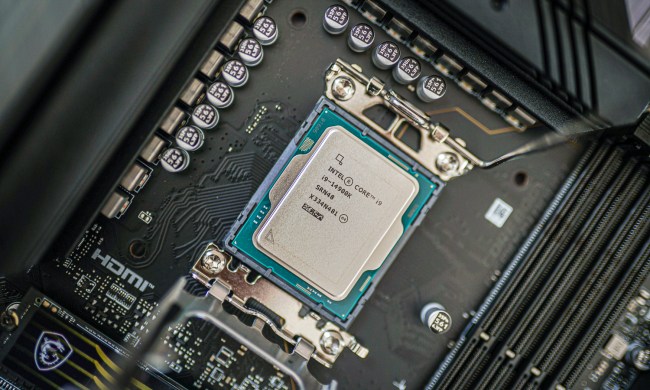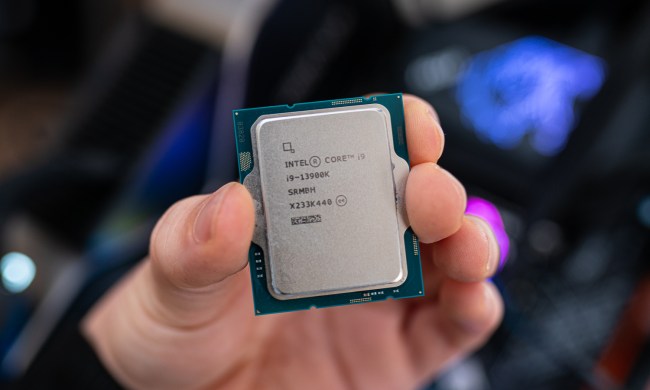Intel’s eighth-generation Core processors first debuted in late 2017, but the launch covered a limited number of processors. Notably missing was a successor to the top-tier seventh-generation quad-core chips, as well as a fully filled line-up of desktop processors. The company’s new announcement bulks up its chip line and offers the first ever six-core CPUs for mobile.
Core i9 leads six-core chips for laptops
The eighth-generation of Intel Core threw a bit of a wrench into its processor line. The new mainstream, U-Series processors were upgraded from dual-core to quad-core. That meant they performed nearly as well as seventh-generation H-Series chips, which target

Intel’s Core i9-8950HK is the headliner. It’s not only among the first six-core chips for mobile, but also the first Core i9 for a laptop. Its maximum clock speed of 4.8GHz is absurd for mobile hardware, and it’s even unlocked, so daring owners can try to overclock it for even better performance.
Processors lower in the line also benefit from an upgrade to six cores. The Core i7-8750H is the chip to watch, because it’s the one we think will appear as standard in most high-end gaming and workstation laptops. The Core i5-8400H and 8300H only have four cores, and will likely appear in entry-level
All these processors have hyper-threading, too, so they’ll operate as if they have twice as many physical cores as they do. Intel claims an up to 29 percent improvement in overall performance versus a 7th-generation Intel Core H-Series. The new chips also have Optane support, integrated Intel Wireless-AC with Gigabit Throughput, and integrated USB 3.1 Gen2 support.
Intel U-Series with Iris
Next up are Intel’s new additions to the mainstream U-Series line. These processors, most of which have four cores, are different from previous U-Series hardware because they include Intel Iris Plus graphics. They also have a higher thermal design power — up to 28 watts from 15 watts.

Processors like this have been in Intel’s line-up for the past few generations. They don’t appear in many laptops, but they do appear in one popular model: Apple’s MacBook Pro 13 with Touch Bar.
The desktop line is expanded, too
In addition to the new mobile processors, Intel’s also added desktop chips – nine of them, in fact. Most of them target low power envelopes, which means they’ll primarily appear in all-in-ones.

With that said, the new Core i3-8300, with its base clock of 3.7GHz and four cores and suggested price of $138, could be a great pick for budget gaming rigs. It’s also interesting to see Intel is rolling out Optane support for all of these chips, even the least expensive of the bunch.
The plus is for Optane
In fact, while this announcement seems processor-focused on the surface, Intel’s Optane storage technology is a major part of it. All the processors announced have Optane memory support, and Intel is rolling out a new piece of branding called ‘Intel Core +.’
The “+” stands for Intel Core paired with Intel Optane. The company says this new branding with its own distinctive blue badge, will be found on laptops and desktops that have Optane included from the factory. Of course, we wouldn’t see this new badge if Intel didn’t intend for Optane to appear in a lot of systems over the remainder of 2018.
Intel also boasted specifically of Optane’s performance when paired with hard disk drive in a system that also has a solid state drive. The company claims that, in this configuration, games load up to 4.7 times more quick, and media loads up to 1.7 times more quick, than on a hard disk alone. We do find it hard to believe many laptop makers will sign up to add a third drive, but this configuration could be popular in high-end
Security patched
While Intel is making big claims about the performance of its new hardware, you may be just as worried about security. The company says all of these new processor will be patched to handle the Meltdown and Spectre flaws.
It’s only a patch, though – not an architecture change, which will be needed to address the problems without any ding to performance. Intel says all performance claims relating to its new processors are based on post-patch numbers.


